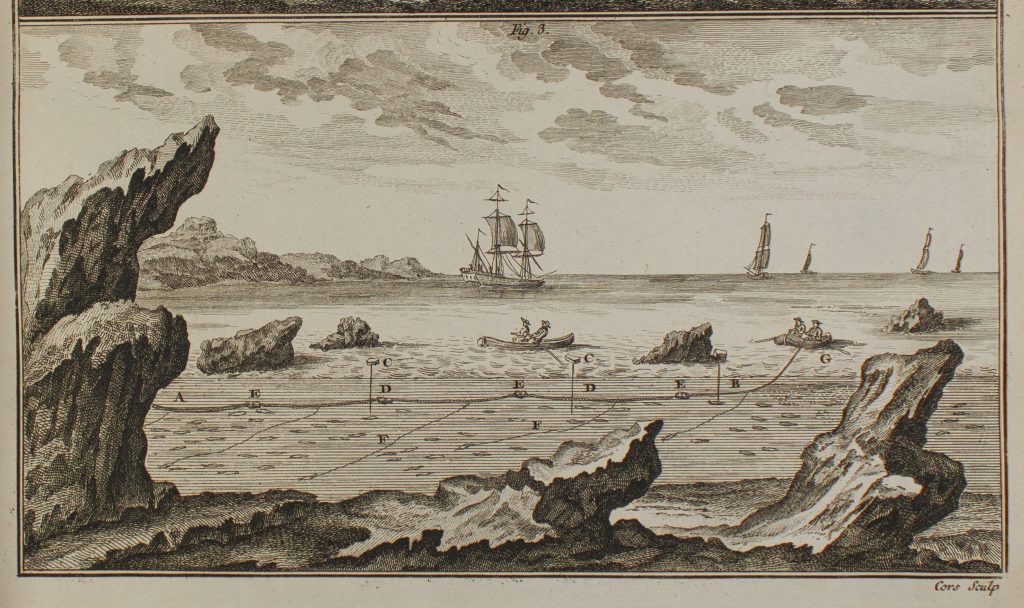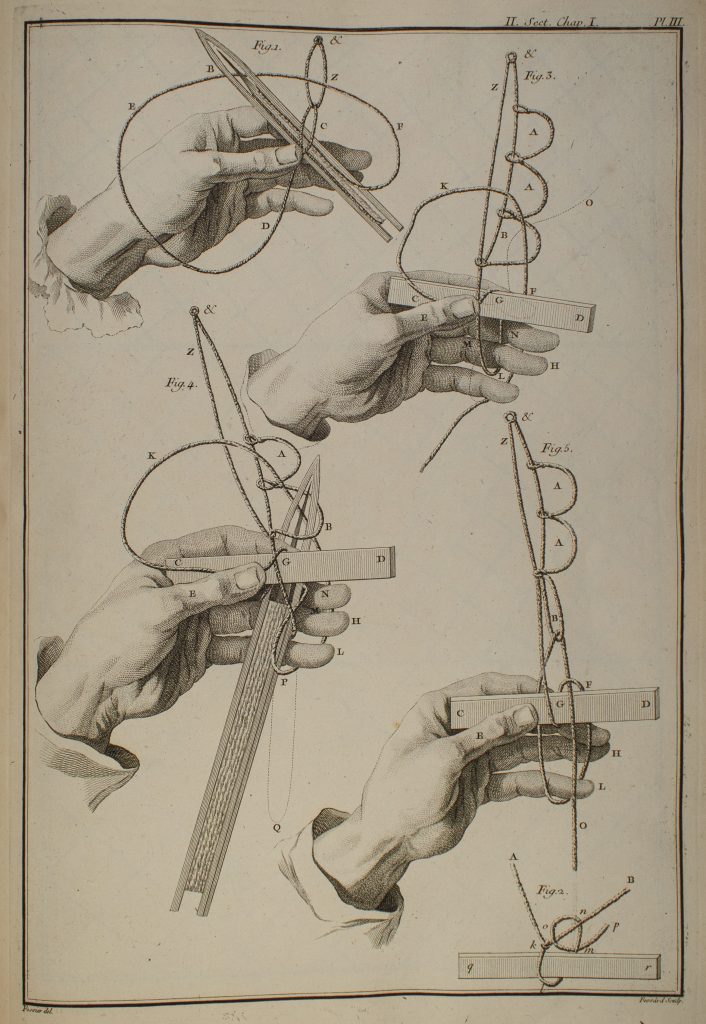15 du Monceau’s The General Treaty of Fish
Suzie Davies
About the Author
Henri-Louis Duhamel du Monceau (sometimes known as Hamel, Duhamel, du Hamel, or Monceau) (1700-1782) was one of the pre-eminent scientific investigators of the French Enlightenment period. He was a proponent of the French Enlightenment and wrote a large number of books on a wide range of topics of scientific and economic interest.[1]
In his youth, Monceau developed a passion for botany, which took him into studies of horticulture, agriculture and forestry. He first achieved scientific recognition when he was requested by the French Academy of Sciences to investigate the cause of a blight that was attacking the saffron plant industry in the 1720s. His comprehensive and conclusive study showed that the disease was caused by a plant parasitic root fungus.[2] This thorough investigation and report led to his election to the French Academy of Sciences in 1728.
Following this, he was appointed to the position of Inspecteur généneral de la marine in 1732. He undertook studies into the cultivation of hemp, rope making and wooden boat building. This led further into sail-making, boat building and various other maritime topics. He also published major works on the construction of naval ships. His detailed description of the construction of naval ships, Elemens de l’architecture navale, ou traite pratique de la construction des vaisseaux was published in 1752.[3]
In 1741 Monceau founded a school of marine science, which became the Ecole des Ingenieurs-Constructeurs, the forerunner of the modern Ecole du Genie Maritime. He was also involved in the foundation of the Academie de Marine de Brest, still one of France’s most prestigious marine research institutes.[4] In the 1980s, scientific studies of the Great Barrier Reef instigated collaboration between the French marine science community and AIMS. Connections between AIMS and the French marine community were further strengthened in 1987 by the visit of Jacques-Yves Cousteau’s RV Calypso to AIMS. Such collaboration continues to this day.
From the year 1740 Monceau made meteorological observations, and kept records of the influence of the weather on agricultural production.[5] Throughout his life he continued to write on such diverse topics as naval architecture, botany, rope making and meteorology.[6] His research on fruit trees resulted in probably his most ambitious works, Trait des arbres fruitiers in 1768. Today, he is recognised as one of the forerunners of modern agronomy.
Monceau died in Paris in August 1782. At the time of his death, his forests in Vrigny and Denainvilliers contained no fewer than 692 species of trees.[7] His work has been of use to many amateurs and professional scientists.
About the Book
The General Treaty of Fish, known in French as Traité général des pesches, was written by Henri-Louis Duhamel du Monceau and Jean-Louis De La Marre between 1769 and 1782. It focuses largely on the boats, equipment and techniques of fishermen in France during that period. While the text covers mainly France there are also descriptions of areas of economic importance such as the Grand Banks.[8]

The Traité général des pesches is an important historical work that provides unique insight into the practices around fishing in France during the mid-to-late eighteenth century. This work deals extensively with the species of fish found in waters readily accessible to Europeans, their habits and habitats, techniques and equipment used in fishing and fish processing, and many other aspects of these endeavours.
The book is particularly large, with dimensions being 29cm (width), 45 cm (height), and 6 cm (depth), with illustrations being up to 32×22 cm. Roughly 185 engraved plates illustrate the text. The copy held in the Sir Maurice Yonge Collection at JCU Library comprises three parts bound into one volume.

Considered one of the finest extant works on fishing and fisheries, the book’s plates show both fresh and saltwater fish, fishing boats, fishing equipment and fishers.[9] Particularly fine drawings are included, showing great detail of fishing nets and fishing hooks, with beautiful illustrations of hands tying and knotting nets. Great illustrative detail is also provided of both wooden and netted fish traps, as well as people working in fishing boats, and neighbouring villages. Many of the detailed technical drawings are placed in beautiful landscape and seascape settings, providing lovely historical records of coastal areas, often also showing large sailing and fishing boats.

- “Henri-Louis Duhamel du Monceau,” Wikipedia, accessed April 21, 2018, https://en.wikipedia.org/w/index.php?title=Henri-Louis_Duhamel_du_Monceau&oldid=820167599. ↵
- Jon Eklund, "Duhamel Du Monceau, Henri-Louis," In Complete Dictionary of Scientific Biography, Encyclopedia.com, accessed October 22, 2022, https://www.encyclopedia.com/science/dictionaries-thesauruses-pictures-and-press-releases/duhamel-du-monceau-henri-louis.; Bret Payne, “Henri-Louis Duhamel du Monceau, 1700-1782: Biography of Henri-Louis Duhamel du Monceau,” Oak Spring Garden Library, accessed April 19, 2018, http://www.mobot.org/mobot/osgl/author.asp?creator=Henri-Louis%20Duhamel%20du%20Monceau. ↵
- Eklund, "Duhamel Du Monceau, Henri-Louis." ↵
- Wikipedia, “Henri-Louis Duhamel du Monceau.” ↵
- Wikipedia. ↵
- Payne, “Henri-Louis Duhamel du Monceau.” ↵
- Payne. ↵
- Alyssa Hamer, “Explore Open Collections: Traite General des Pesches,” Digitizers’ Blog (blog), April 23, 2018, https://digitize.library.ubc.ca/digitizers-blog/explore-open-collections-traite-general-des-pesches. ↵
- Hamer, “Explore Open Collections ↵

